An icon of the American west, the Texas longhorn traces its origins to cattle brought to the Americas from the Iberian Peninsula by Spanish conquistadors. In Texas, some of these criollo cattle went feral and over several generations adapted to the harsh dry climate of the American southwest. When American settlers spread westward, they brought European cattle breeds that, by themselves, failed to thrive, but when crossed with the criollo cattle did exceptionally well. The result was the Texas longhorn. By the time of the American Civil War, Texas longhorn populations soured to over 5 million. By the 1930’s the open range was largely divided and fenced, and other cattle breeds began to replace the longhorns. By the 1960’s only a few hundred Texas longhorns remained. In 1964 The Texas Longhorn Breeders Association of America was formed and thanks to conservation efforts there are now over 300,000 Texas longhorns spread out across the United States.
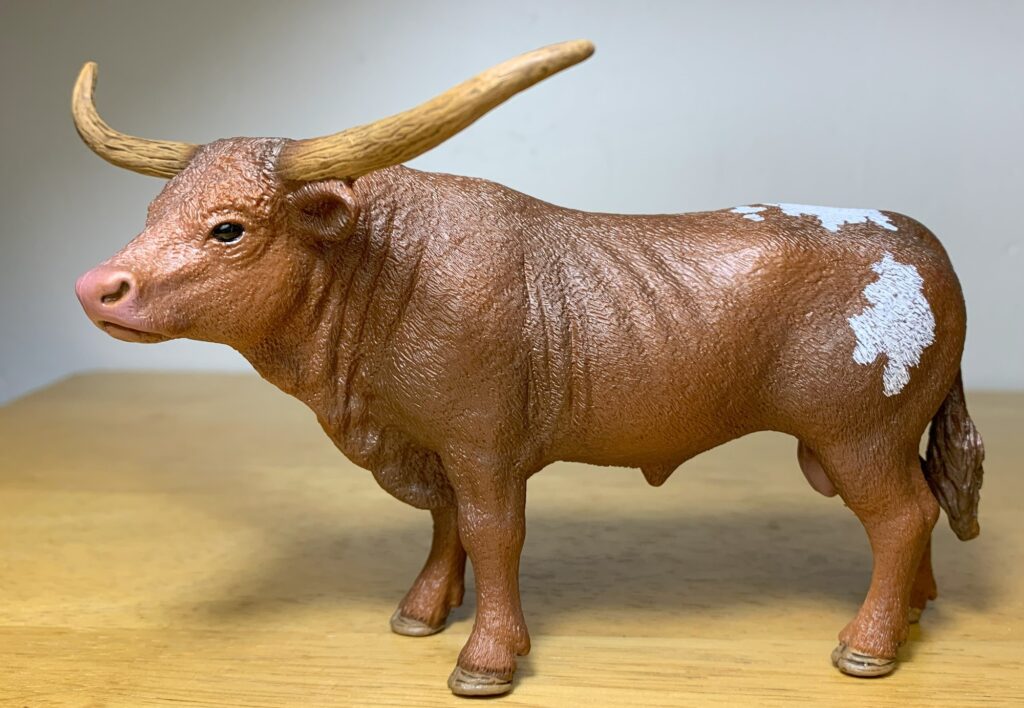
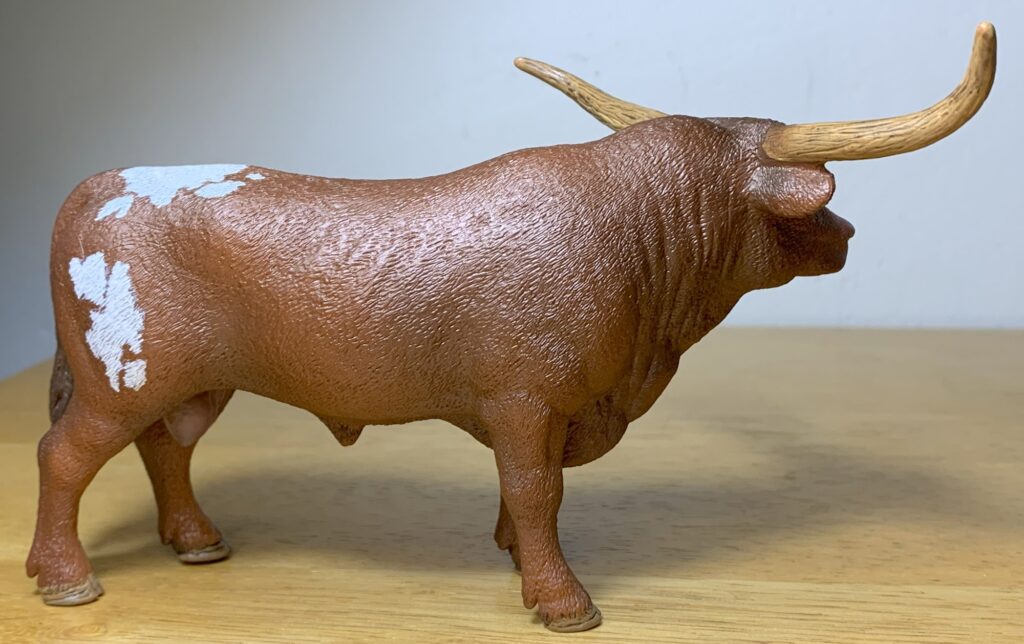
For my collection I went with the 2018 Texas longhorn bull by Schleich. Schleich also makes a black and white longhorn cow and a calf. Good models of the breed are available from all the major western companies, but I went with Schleich’s upon seeing it in person while shopping at my local Tractor Supply Co.
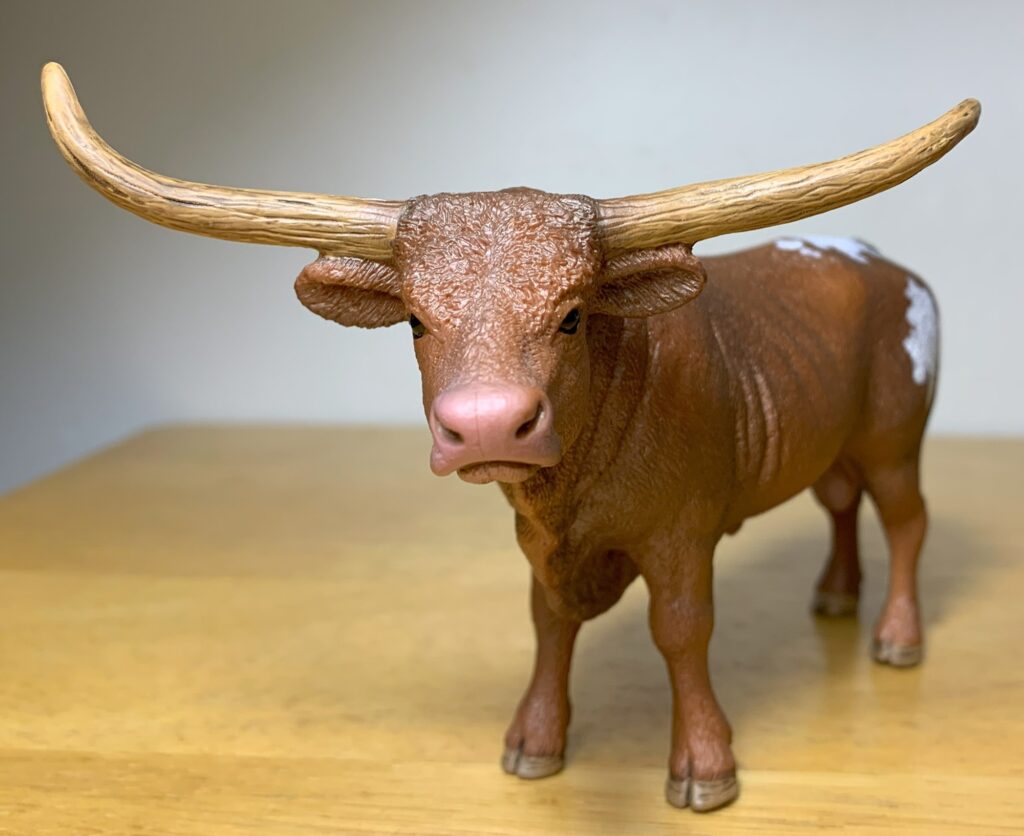
The Schleich longhorn bull measures about 5” (12.7 cm) and stands 3” (7.62 cm) tall at the shoulder. Actual longhorns are considered a medium sized breed. Bulls average 1,430 lbs. (648 kg) while cows average 770 lbs. (349 kg). Bulls stand 5’ (1.5 meters) at the shoulder while cows stand 4.5’ (1.3 meters). Using shoulder height, we get a scale of 1/20 for the figure. Like most Schleich cattle the figure is in a static pose and looking leftward.

The Schleich longhorn has the long and lean build of the breed, with long legs and high set shoulders. Of course, the longhorn is mostly characterized by the spread of its long, thin horns. On average, these horns spread 5.5’ apart but the record length is over 10’. The shape and angle of the horns can vary but Schleich has them pointing straight out to the sides with the tip of the right horn pointing slightly upwards and the tip of the left horn pointing slightly backwards.
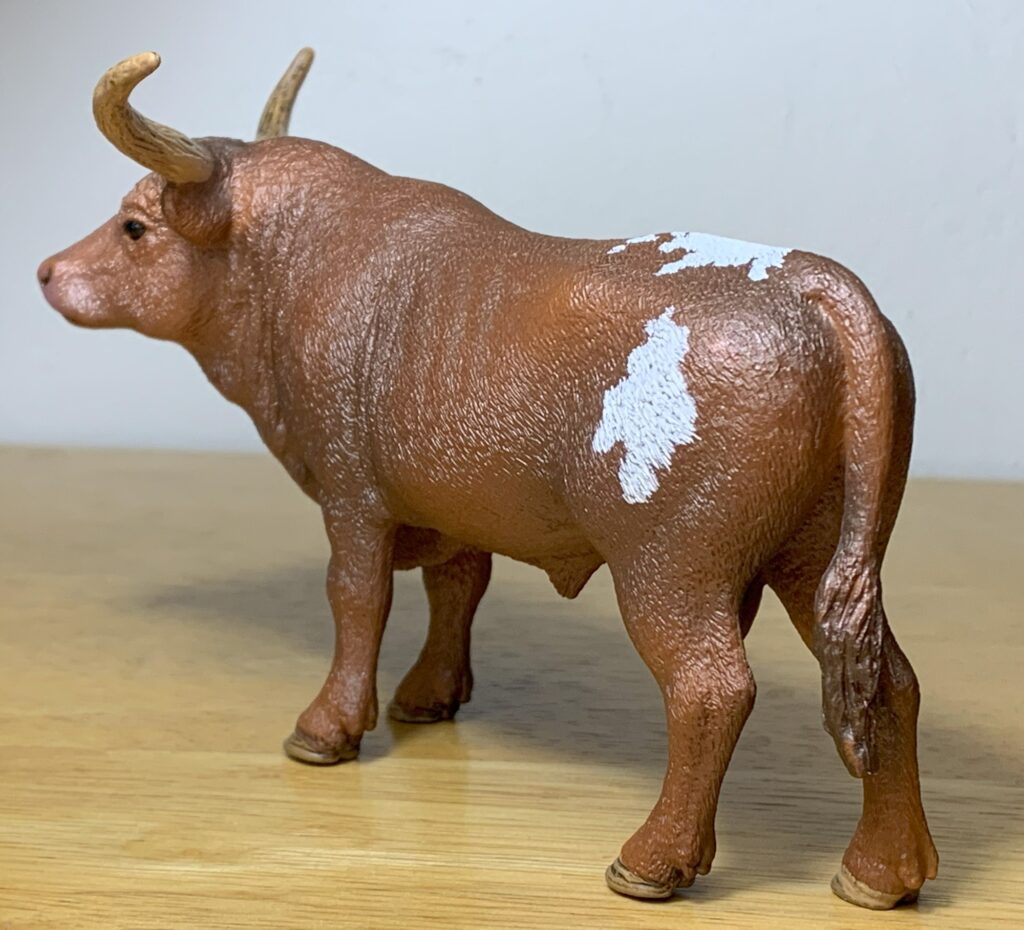
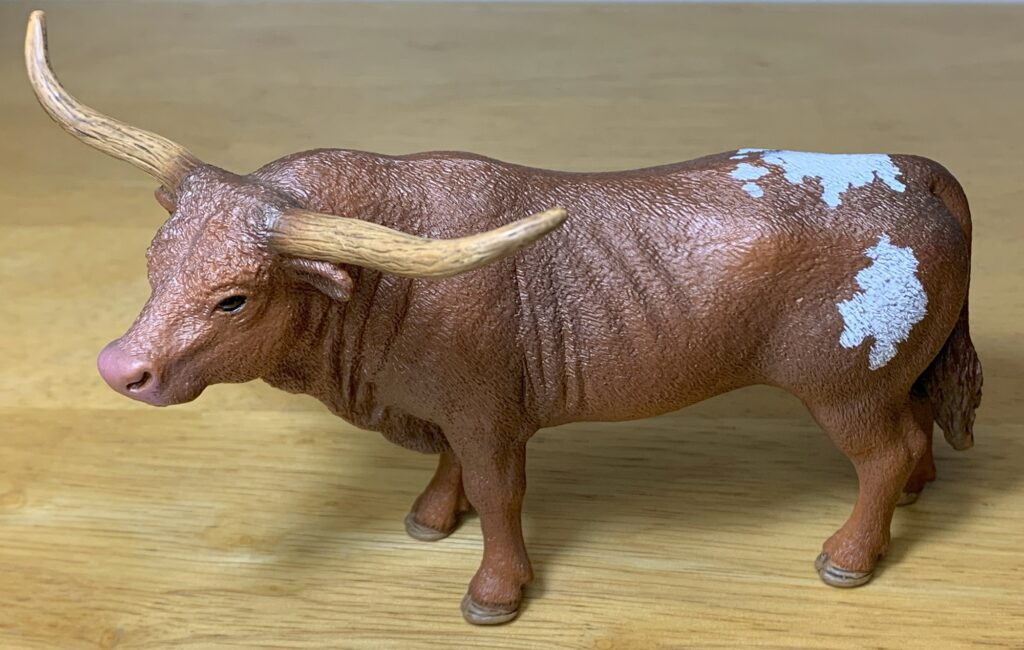
I’ve reviewed a lot of Schleich cattle so it should be apparent that I’m a fan of them, and regard them highly. This bull is no different. The body is nicely covered in a fine coat of hair with the ribs slightly visible along the torso and the hips protruding slightly. Grooves are etched into the horns and a patch of curly hair is sculpted on the poll (top of the head). The mouth and nostrils are well defined and, in this instance, lacking the smirk of some of Schleich’s recent offerings. The neck is thick and muscular with a prominent dewlap running along its underside. Skin folds are sculpted along the neck and muscular forelimbs. The long hair on the tail tip is nicely textured and the scrotum and sheath are present. The hooves have horizontal grooves etched into them and concavity on their underside.
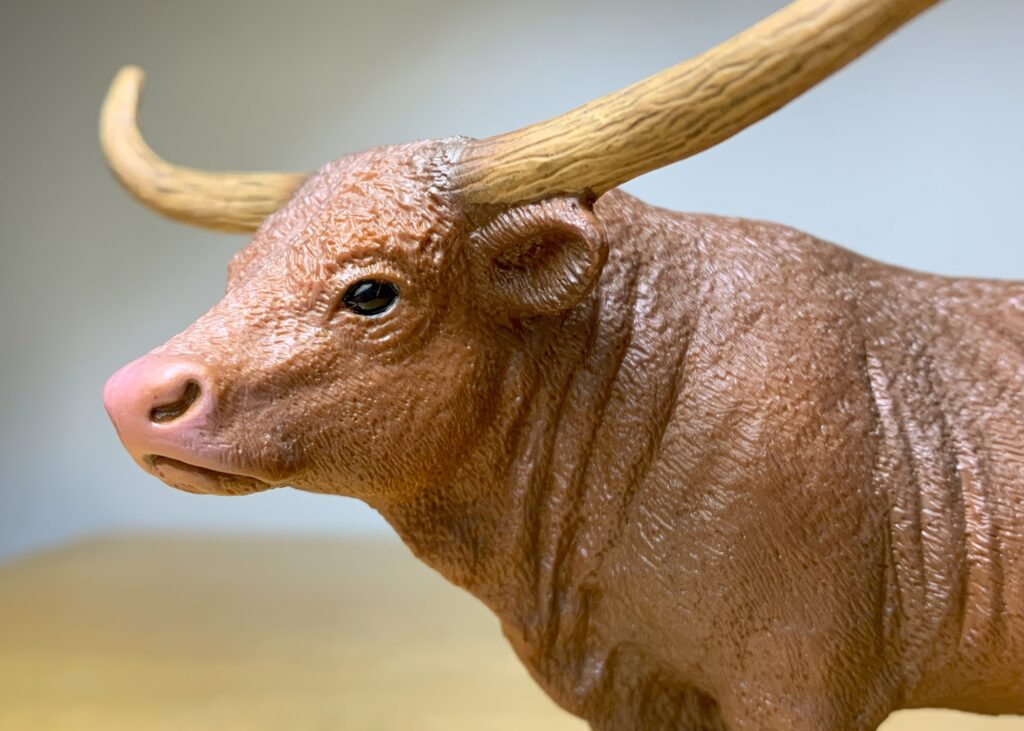
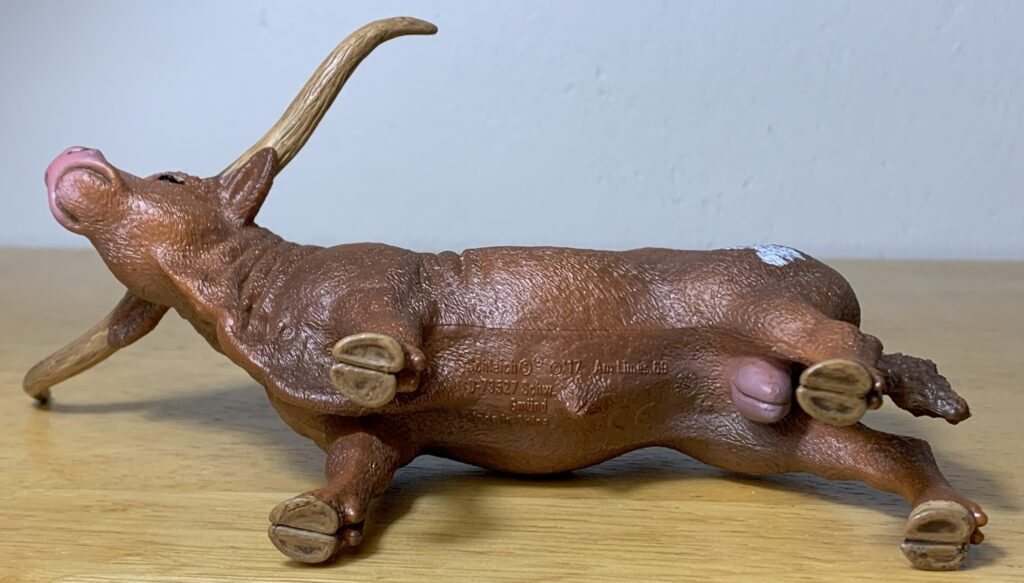
The figure is painted dull red with white spotting on the hindquarters. Red and white are the most common color, but Texas longhorns can come in all patterns and colors typical of cattle. I would have preferred a more even ratio of white to red, like on Schleich’s retired longhorn, but this is agreeable, and I mostly just wanted one that was red instead of black. The hooves and horns are brown, the muzzle is pink, and the eyes are glossy black.
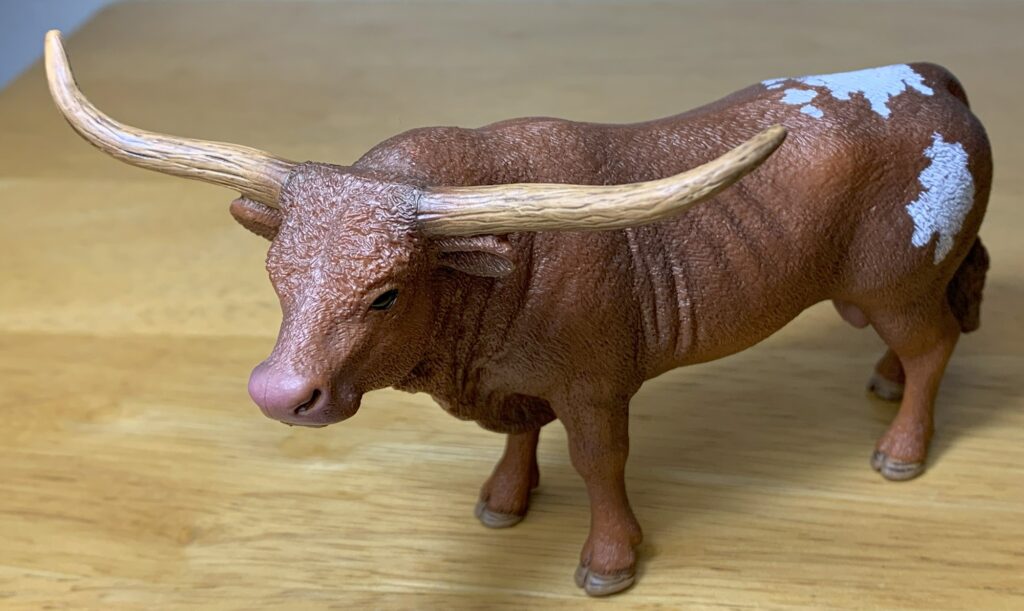
There are a lot of excellent Texas longhorn figures out there to choose from, but Schleich’s is definitely one of the most affordable and easy to come by, at least in the United States. The Schleich longhorn is an excellent addition to a collection of longhorns or as a stand alone representative of the breed. I like it considerably more than their longhorn cow, which I passed up more than a few times. This figure is currently in production and retails for about $9.
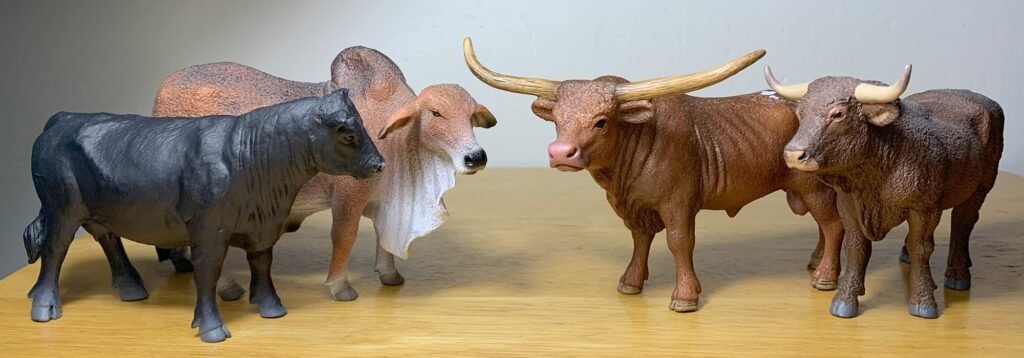
Disclaimer: links to Ebay and Amazon on the AnimalToyBlog are affiliate links, so we make a small commission if you use them. Thanks for supporting us!




Not bad but I prefer CollectA’s. Is it just the angle or does the head look a little disproportionately large on this Schleich longhorn?
I think it’s mostly the angle, since I’m focusing on the head in most of the pictures and it is turning leftward. I don’t like the horns on CollectA’s but aside from that I would agree that it is the better of the two.